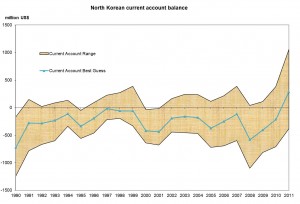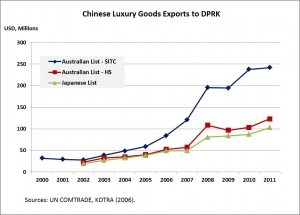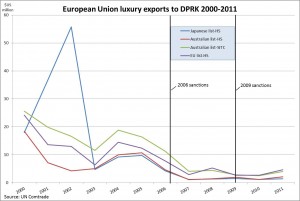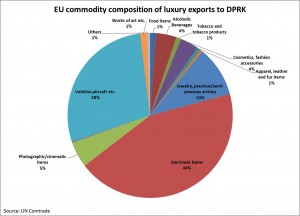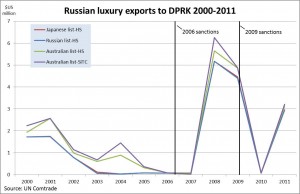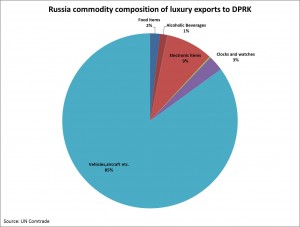According to Reuters:
Bilateral trade dropped more than 7 percent to $1.3 billion in January-March, with China’s imports from North Korea rising 2.5 percent to $590 million but exports down 13.8 percent to $720 million – excluding fuel, food or other Chinese aid. Annual trade is worth some $6 billion, a fraction of China’s trade with South Korea which last year topped $230 billion.
…
China also supplies virtually all of North Korea’s external energy needs – crude oil, diesel and jet fuel – much of it in the form of off-the-books aid.
While Chinese data showed no exports of crude oil to North Korea in February, deliveries resumed in March, with customs figures showing 106,000 metric tons of supply. China officially supplied 523,041 metric tons of crude oil last year.
The Ministry of Commerce appears to be delaying or possibly cancelling an internal tender to supply North Korea with diesel fuel, two oil trading sources said, while a person close to state-owned Sinochem Group said jet fuel flows were normal. China supplied North Korea with 42,251 metric tons of jet fuel last year, according to customs data, and 31,050 metric tons of diesel.
Another trading source said coal imports from North Korea – typically entering China through Dandong’s Donggang Port after coming down the Yalu River or up the coast – were not affected.
Many Chinese companies are also involved in mining in North Korea. A source at Wanxiang Resources, which has a copper mine in Hyesan in North Korea’s Ryanggang province, said there had been no orders from China to withdraw their workers, although North Korean staff had been asked to attend more political activities, which was hurting production.
Read more in the Wall Street Journal.
Read the full story here:
China steps up customs checks, but North Korea trade robust
Reuters
2013-4-30

